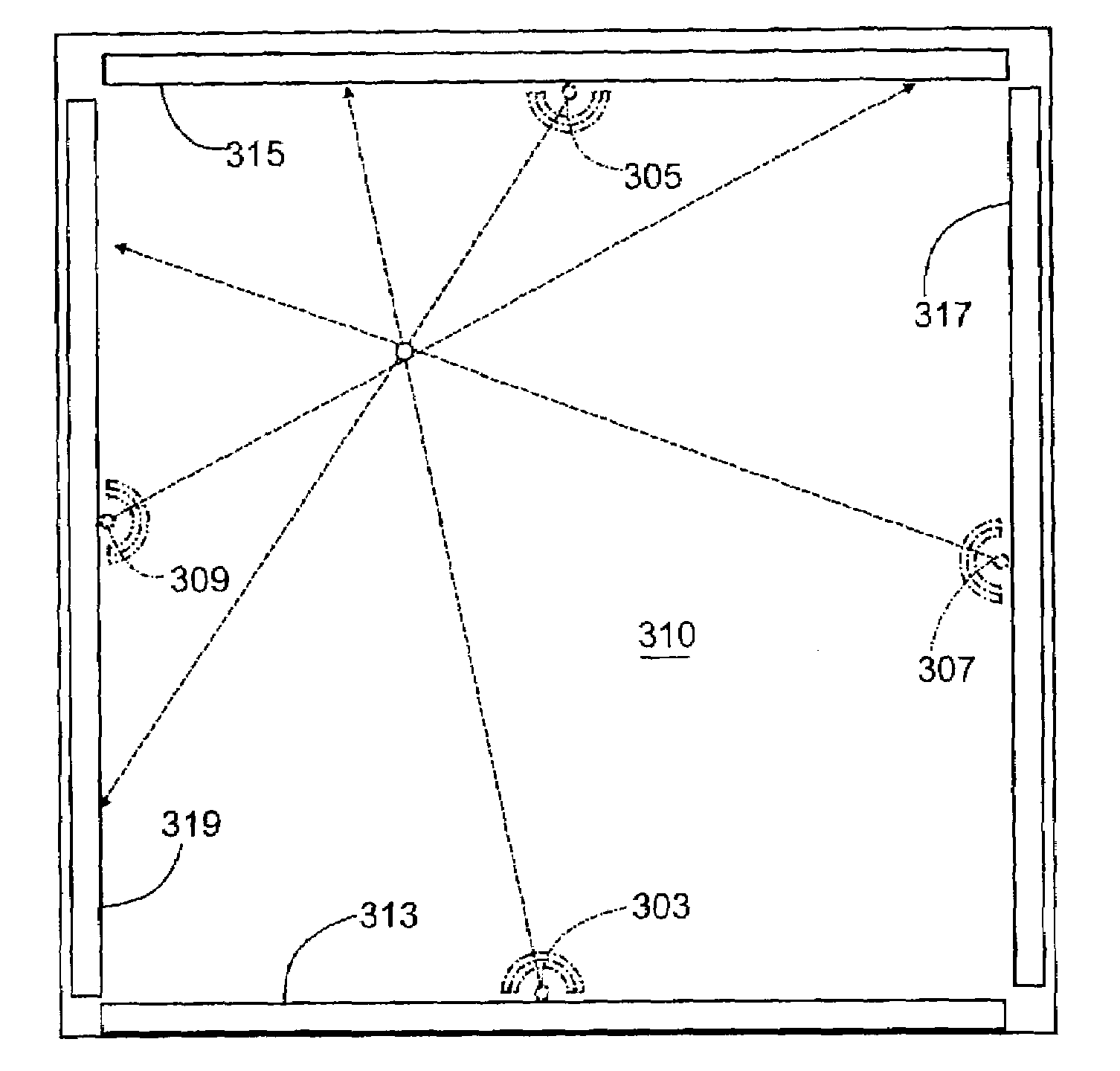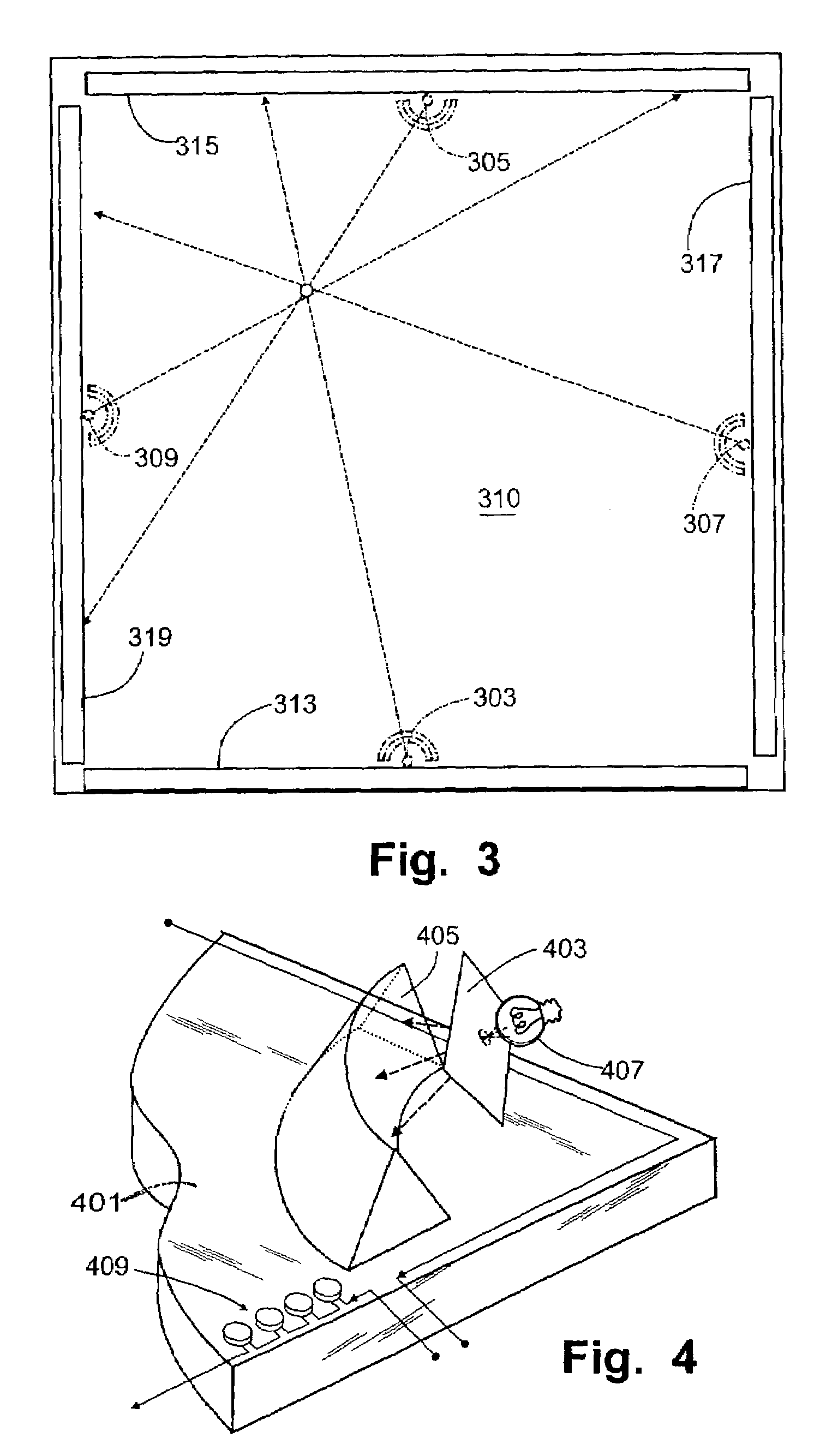Input device based on frustrated total internal reflection
a total internal reflection and input device technology, applied in the field of detecting the position of objects, can solve the problems of affecting the usability of these systems, few of these systems can preserve the familiar mechanical response of traditional tools such as brushes, pens, bare fingers, and are unable to detect the size, shape and other nuances of drawing/writing tools, so as to reduce the transmission of light, reduce the effect of internal reflection and frustration
- Summary
- Abstract
- Description
- Claims
- Application Information
AI Technical Summary
Benefits of technology
Problems solved by technology
Method used
Image
Examples
Embodiment Construction
[0016]The proposed system detects the contact of a wet brush, felt pen, or finger to a surface using an optical technique called “frustrated total internal reflection” (FTIR).
[0017]Total internal reflection permits radiation to be transmitted substantially without loss between opposing surfaces of a transparent material. Total internal reflection is the reflection of electromagnetic radiation from the interface of a transparent material with larger index of refraction n1 (such as glass) with an adjoining medium having a smaller index of refraction n2 (such as air) when the radiation makes an angle smaller than the “critical angle” (sin −1 (n2 / n1)) to the normal. When an object such as a human finger is placed in contact with the interface surface, “evanescent radiation” extending into a region occupied by contacting object permits energy to flow across the boundary. This phenomenon is known as frustrated total internal reflection. When transmission across the boundary occurs in this...
PUM
 Login to View More
Login to View More Abstract
Description
Claims
Application Information
 Login to View More
Login to View More - R&D
- Intellectual Property
- Life Sciences
- Materials
- Tech Scout
- Unparalleled Data Quality
- Higher Quality Content
- 60% Fewer Hallucinations
Browse by: Latest US Patents, China's latest patents, Technical Efficacy Thesaurus, Application Domain, Technology Topic, Popular Technical Reports.
© 2025 PatSnap. All rights reserved.Legal|Privacy policy|Modern Slavery Act Transparency Statement|Sitemap|About US| Contact US: help@patsnap.com



